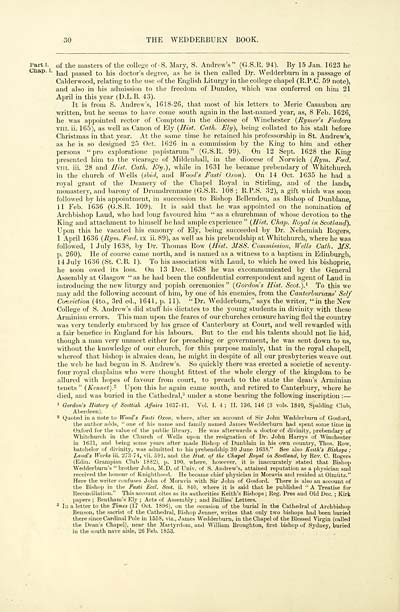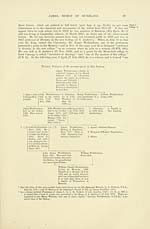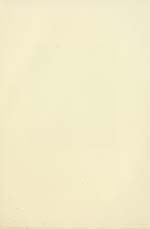Wedderburn book > History
(120) Page 30
Download files
Complete book:
Individual page:
Thumbnail gallery: Grid view | List view

30 THE WEDDERBURN BOOK.
Parti, of the masters of the college of-S. Mary, S. Andrew's" (G.S.R. 94). By 15 Jan. 1623 he
Chap. I. j ia( j p asse( j to his doctor's degree, as he is then called Dr. Wedderbum in a passage of
Calderwood, relating to the use of the English Liturgy in the college chapel (R.P.C. 59 note),
and also in his admission to the freedom of Dundee, -which was conferred on him 21
April in this year (D.L.B. 43).
It is from S. Andrew's, 1618-26, that most of his letters to Meric Casaubon are
written, but he seems to have come south again in the last-named year, as, 8 Feb. 1626,
he was appointed rector of Compton in the diocese of Winchester (Rymer's Fcedera
vni. ii. 165), as well as Canon of Ely (Hist. Cath. Ely), being collated to his stall before
Christmas in that year. At the same time he retained his professorship in St. Andrew's,
as he is so designed 25 Oct. 1626 in a commission by the King to him and other
persons "pro exploratione papistarum" (G.S.R. 99). On 12 Sept. 1628 the King
presented him to the vicarage of Mildenhall, in the diocese of Norwich (Rym. Feed.
vni. iii. 28 and Hist. Cath. Ely.), while in 1631 he became prebendary of Whitchurch
in the church of Wells (ibid, and Wood's Fasti Oxon). On 14 Oct. 1635 he had a
royal grant of the Deanery of the Chapel Royal in Stirling, and of the lands,
monastery, and barony of Drunidrennane (G.S.R. 108 ; R.P.S. 32), a gift which was soon
followed by his appointment, in succession to Bishop Bellendeu, as Bishop of Dunblane,
11 Feb. 1636 (G.S.R. 109). It is said that he was appointed on the nomination of
Archbishop Laud, who had long favoured him " as a churchman of whose devotion to the
King and attachment to himself lie had ample experience " (Hist. Chap. Royal in Scotland).
Upon this he vacated his canonry of Ely, being succeeded by Dr. Nehemiah Rogers,
1 April 1636 (Rym. Fwd. ix ii. 89), as well as his prebendship at Whitchurch, where he was
followed, 1 July 1638, by Dr. Thomas Row (Hist. MSS. Commission, Wells Cath. MS.
p. 260). He of course came north, and is named as a witness to a baptism in Edinburgh,
14 July 1636 (St. C.B. 1). To his association with Laud, to which he owed his bishopric,
he soon owed its loss. On 13 Dec. 1638 he was excommunicated by the General
Assembly at Glasgow " as he had been the confidential correspondent and agent of Laud in
introducing the new liturgy and popish ceremonies" {Gordon's Hist. Scot.). 1 To this we
may add the following account of him, by one of his enemies, from the Canterburians' Self
Conviction (4to., 3rd ed., 1641, p. 11). "Dr. Wedderburn," says the writer, "in the New
College of S. Andrew's did stuff his dictates to the young students in divinity with these
Arminian errors. This man upon the feares of our churches censure having fled the country
was very tenderly embraced by his grace of Canterbury at Court, and well rewarded with
a fair benefice in England for his labours. But to the end his talents should not lie hid,
though a man very unmeet either for preaching or government, he was sent down to us,
without the knowledge of our church, for this purpose mainly, that in the royal chapell,
whereof that bishop is alwaies dean, he might in despite of all our presbyteries weave out
the web he had begun in S. Andrew's. So quickly there was erected a societie of seventy-
four royal chaplains who were thought fittest of the whole clergy of the kingdom to be
allured with hopes of favour from court, to preach to the state the dean's Arminian
tenets " (Kennet).- Upon this he again came south, and retired to Canterbury, where he
died, and was buried in the Cathedral, 3 under a stone bearing the following inscription : —
1 Gordon's History of Scottish Affairs 1637-41. Vol. I. 4 ; II. 136, 146 (3 vols. 1840, Spalding Club,
Aberdeen).
2 Quoted in a note to Wood's Fasti Oxon, where, after an account of Sir Johu Wedderburn of Gosford,
the author adds, " one of his name and family named James Wedderburn had spent some time in
Oxford for the value of the public library. He was afterwards a doctor of divinity, prebendary of
Whitchurch in the Church of Wells upon the resignation of Dr. John Harrys of Winchester
in 1631, and being some years after made Bishop of Dunblaiu in his own country, Thos. Row,
batchelor of divinity, was admitted to his prebendship 30 June 1638." See also Keith's Bishops ;
Laud's Works iii. 273-74, vii. 591, and the Hist, of the Chapel Royal in Scotland, by Rev. C. Rogers
(Edin. Grampian Club 1882), p. 190. where, however, it is inaccurately stated that Bishop
Wedderburn's " brother John, M.D. of Univ. of S. Andrew's, attained reputation as a physician and
received the honour of Knighthood. He became chief physician in Moravia and resided at Olmiitz."
Here the writer confuses John of Moravia with Sir Johu of Gosford. There is also an account of
the Bishop in the Fasti Feci. Scot. ii. 840, where it is said that he published " A Treatise for
Reconciliation." This account cites as its authorities Keith's Bishops ; Reg. Pres and Old Dec. ; Kirk
papers ; Bentham's Ely ; Acts of Assembly ; and Baillies' Letters.
3 In a letter to the Times (17 Oct. 1896), on the occasion of the burial in the Cathedral of Archbishop
Benson, the sacrist of the Cathedral, Bishop Jenner, writes that only two bishops had been buried
there since Cardinal Pole in 1558, viz., James Wedderburn, in the Chapel of the Blessed Virgin (called
the Dean's Chapel), near the Martyrdom, and William Broughton, first bishop of Sydney, buried
in the south nave aisle, 26 Feb. 1853.
Parti, of the masters of the college of-S. Mary, S. Andrew's" (G.S.R. 94). By 15 Jan. 1623 he
Chap. I. j ia( j p asse( j to his doctor's degree, as he is then called Dr. Wedderbum in a passage of
Calderwood, relating to the use of the English Liturgy in the college chapel (R.P.C. 59 note),
and also in his admission to the freedom of Dundee, -which was conferred on him 21
April in this year (D.L.B. 43).
It is from S. Andrew's, 1618-26, that most of his letters to Meric Casaubon are
written, but he seems to have come south again in the last-named year, as, 8 Feb. 1626,
he was appointed rector of Compton in the diocese of Winchester (Rymer's Fcedera
vni. ii. 165), as well as Canon of Ely (Hist. Cath. Ely), being collated to his stall before
Christmas in that year. At the same time he retained his professorship in St. Andrew's,
as he is so designed 25 Oct. 1626 in a commission by the King to him and other
persons "pro exploratione papistarum" (G.S.R. 99). On 12 Sept. 1628 the King
presented him to the vicarage of Mildenhall, in the diocese of Norwich (Rym. Feed.
vni. iii. 28 and Hist. Cath. Ely.), while in 1631 he became prebendary of Whitchurch
in the church of Wells (ibid, and Wood's Fasti Oxon). On 14 Oct. 1635 he had a
royal grant of the Deanery of the Chapel Royal in Stirling, and of the lands,
monastery, and barony of Drunidrennane (G.S.R. 108 ; R.P.S. 32), a gift which was soon
followed by his appointment, in succession to Bishop Bellendeu, as Bishop of Dunblane,
11 Feb. 1636 (G.S.R. 109). It is said that he was appointed on the nomination of
Archbishop Laud, who had long favoured him " as a churchman of whose devotion to the
King and attachment to himself lie had ample experience " (Hist. Chap. Royal in Scotland).
Upon this he vacated his canonry of Ely, being succeeded by Dr. Nehemiah Rogers,
1 April 1636 (Rym. Fwd. ix ii. 89), as well as his prebendship at Whitchurch, where he was
followed, 1 July 1638, by Dr. Thomas Row (Hist. MSS. Commission, Wells Cath. MS.
p. 260). He of course came north, and is named as a witness to a baptism in Edinburgh,
14 July 1636 (St. C.B. 1). To his association with Laud, to which he owed his bishopric,
he soon owed its loss. On 13 Dec. 1638 he was excommunicated by the General
Assembly at Glasgow " as he had been the confidential correspondent and agent of Laud in
introducing the new liturgy and popish ceremonies" {Gordon's Hist. Scot.). 1 To this we
may add the following account of him, by one of his enemies, from the Canterburians' Self
Conviction (4to., 3rd ed., 1641, p. 11). "Dr. Wedderburn," says the writer, "in the New
College of S. Andrew's did stuff his dictates to the young students in divinity with these
Arminian errors. This man upon the feares of our churches censure having fled the country
was very tenderly embraced by his grace of Canterbury at Court, and well rewarded with
a fair benefice in England for his labours. But to the end his talents should not lie hid,
though a man very unmeet either for preaching or government, he was sent down to us,
without the knowledge of our church, for this purpose mainly, that in the royal chapell,
whereof that bishop is alwaies dean, he might in despite of all our presbyteries weave out
the web he had begun in S. Andrew's. So quickly there was erected a societie of seventy-
four royal chaplains who were thought fittest of the whole clergy of the kingdom to be
allured with hopes of favour from court, to preach to the state the dean's Arminian
tenets " (Kennet).- Upon this he again came south, and retired to Canterbury, where he
died, and was buried in the Cathedral, 3 under a stone bearing the following inscription : —
1 Gordon's History of Scottish Affairs 1637-41. Vol. I. 4 ; II. 136, 146 (3 vols. 1840, Spalding Club,
Aberdeen).
2 Quoted in a note to Wood's Fasti Oxon, where, after an account of Sir Johu Wedderburn of Gosford,
the author adds, " one of his name and family named James Wedderburn had spent some time in
Oxford for the value of the public library. He was afterwards a doctor of divinity, prebendary of
Whitchurch in the Church of Wells upon the resignation of Dr. John Harrys of Winchester
in 1631, and being some years after made Bishop of Dunblaiu in his own country, Thos. Row,
batchelor of divinity, was admitted to his prebendship 30 June 1638." See also Keith's Bishops ;
Laud's Works iii. 273-74, vii. 591, and the Hist, of the Chapel Royal in Scotland, by Rev. C. Rogers
(Edin. Grampian Club 1882), p. 190. where, however, it is inaccurately stated that Bishop
Wedderburn's " brother John, M.D. of Univ. of S. Andrew's, attained reputation as a physician and
received the honour of Knighthood. He became chief physician in Moravia and resided at Olmiitz."
Here the writer confuses John of Moravia with Sir Johu of Gosford. There is also an account of
the Bishop in the Fasti Feci. Scot. ii. 840, where it is said that he published " A Treatise for
Reconciliation." This account cites as its authorities Keith's Bishops ; Reg. Pres and Old Dec. ; Kirk
papers ; Bentham's Ely ; Acts of Assembly ; and Baillies' Letters.
3 In a letter to the Times (17 Oct. 1896), on the occasion of the burial in the Cathedral of Archbishop
Benson, the sacrist of the Cathedral, Bishop Jenner, writes that only two bishops had been buried
there since Cardinal Pole in 1558, viz., James Wedderburn, in the Chapel of the Blessed Virgin (called
the Dean's Chapel), near the Martyrdom, and William Broughton, first bishop of Sydney, buried
in the south nave aisle, 26 Feb. 1853.
Set display mode to:
![]() Universal Viewer |
Universal Viewer | ![]() Mirador |
Large image | Transcription
Mirador |
Large image | Transcription
Images and transcriptions on this page, including medium image downloads, may be used under the Creative Commons Attribution 4.0 International Licence unless otherwise stated. ![]()
| Histories of Scottish families > Wedderburn book > History > (120) Page 30 |
|---|
| Permanent URL | https://digital.nls.uk/95652159 |
|---|
| Attribution and copyright: |
|
|---|---|
| Description | A selection of almost 400 printed items relating to the history of Scottish families, mostly dating from the 19th and early 20th centuries. Includes memoirs, genealogies and clan histories, with a few produced by emigrant families. The earliest family history goes back to AD 916. |
|---|

